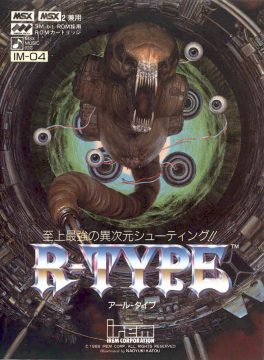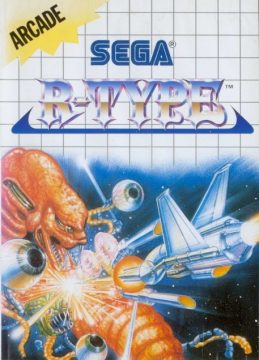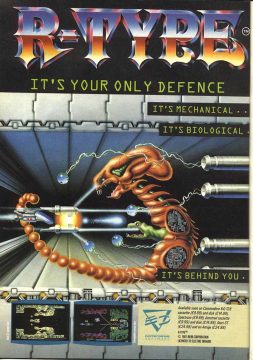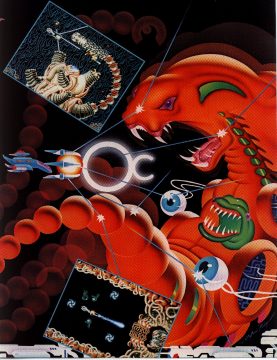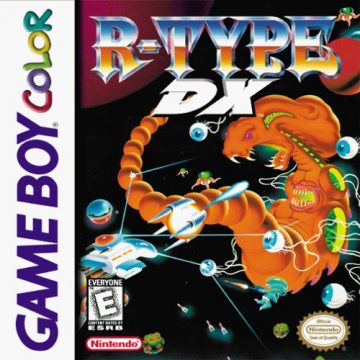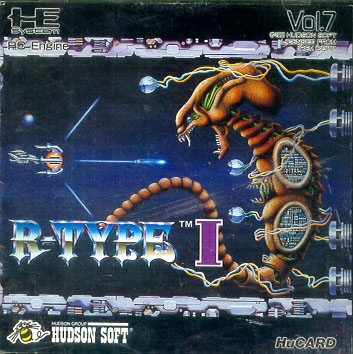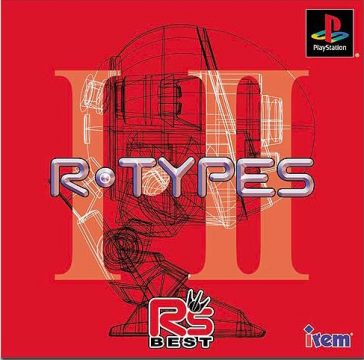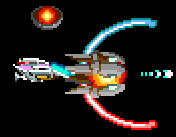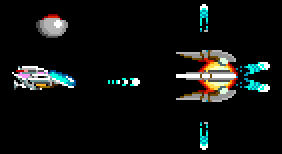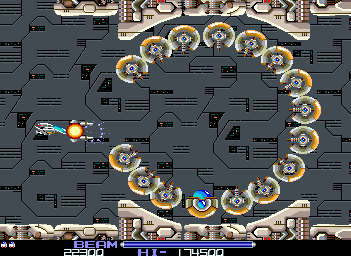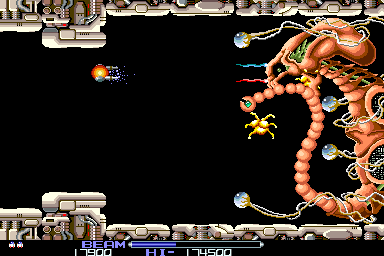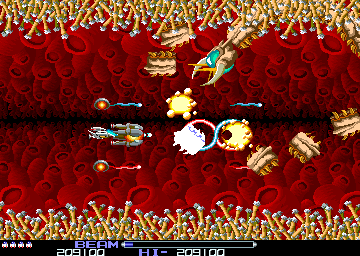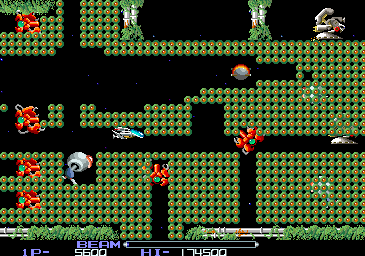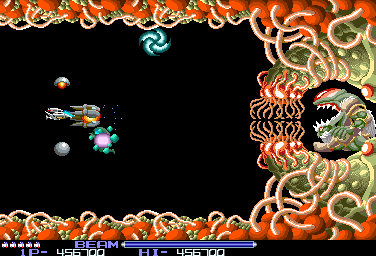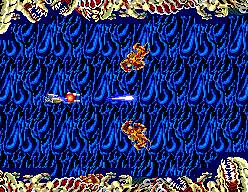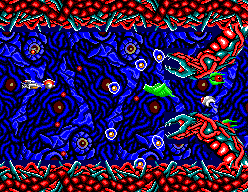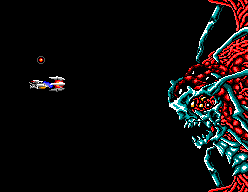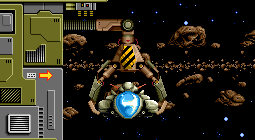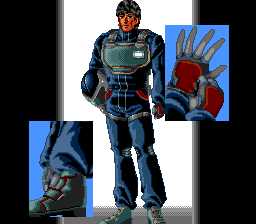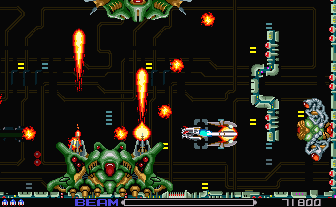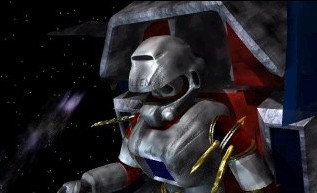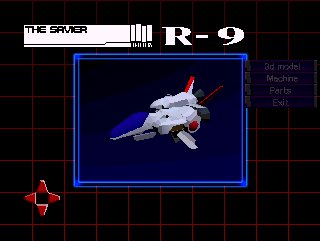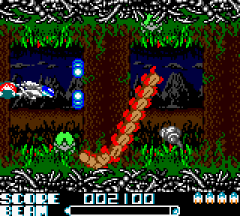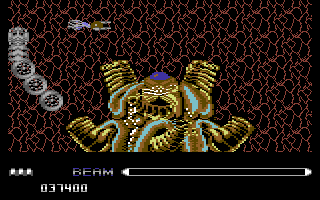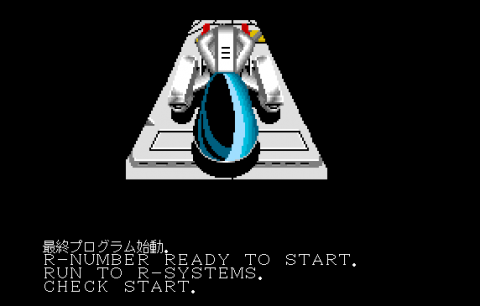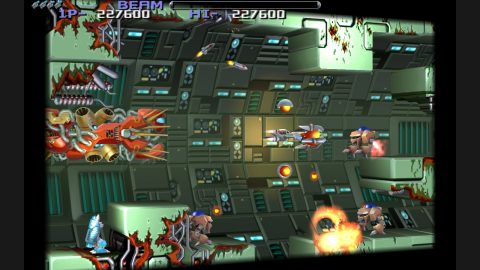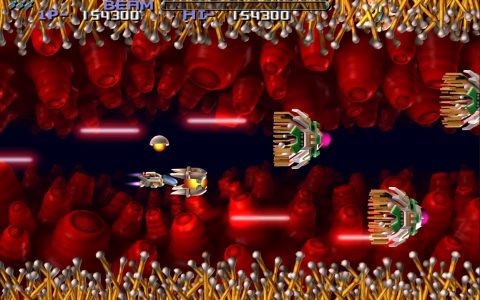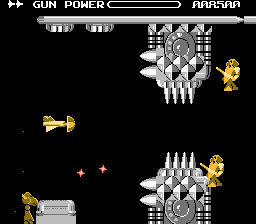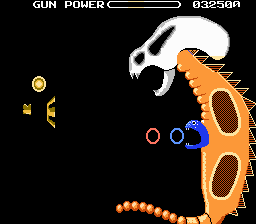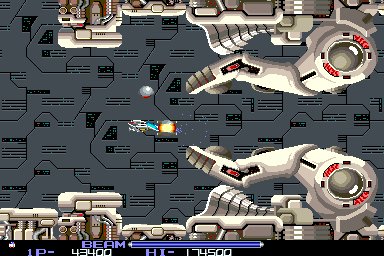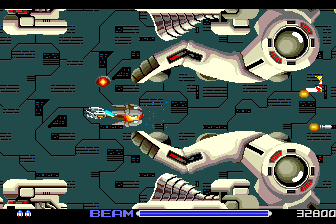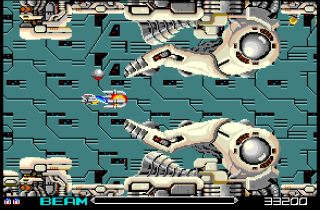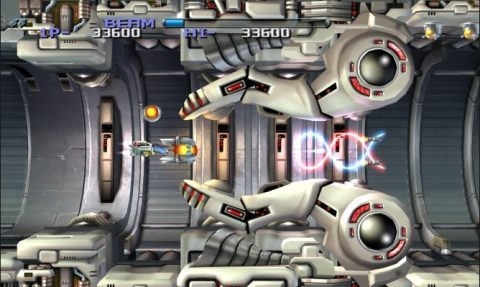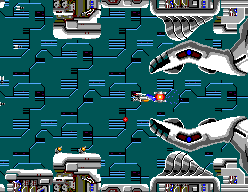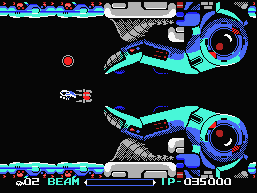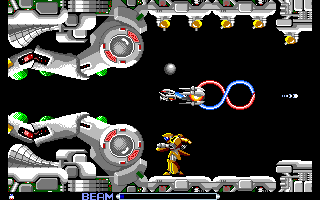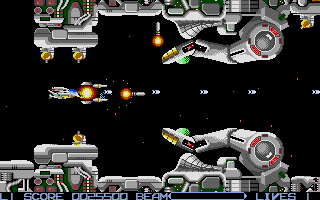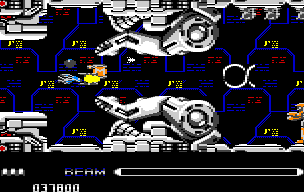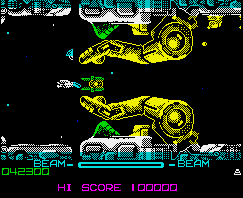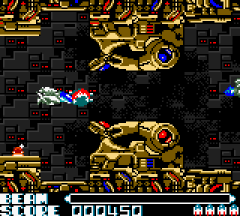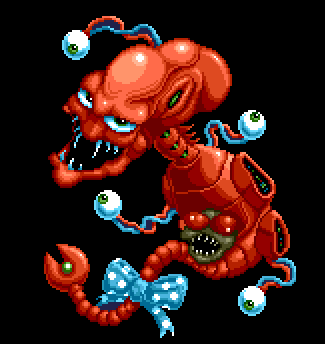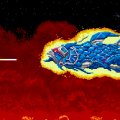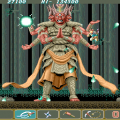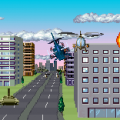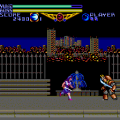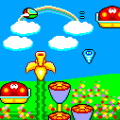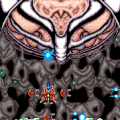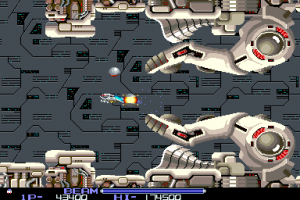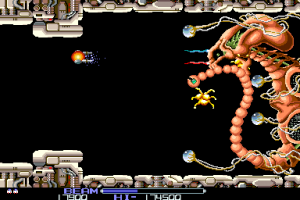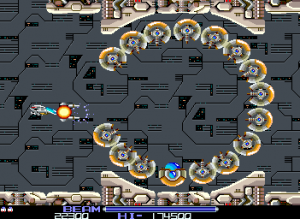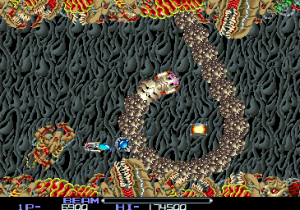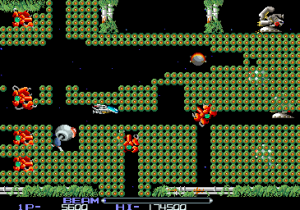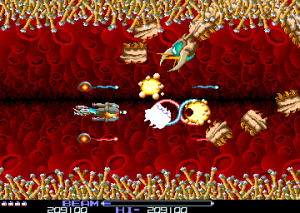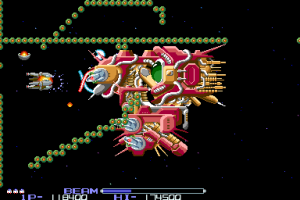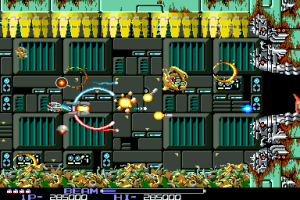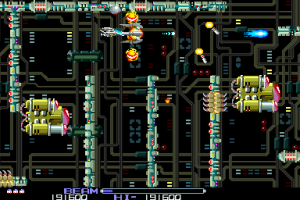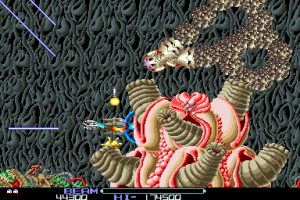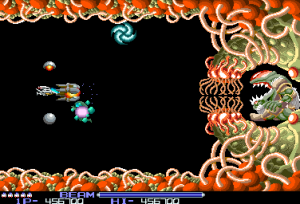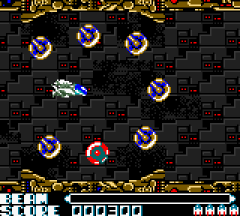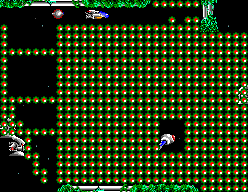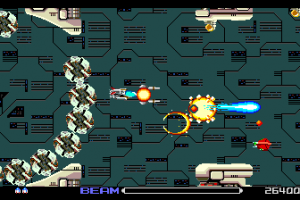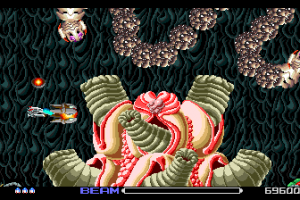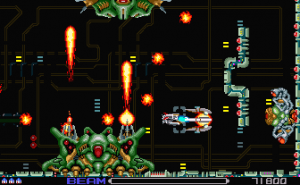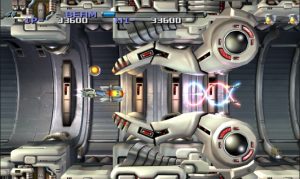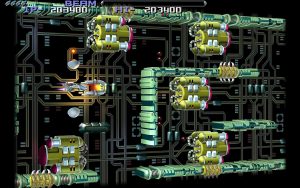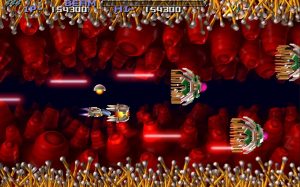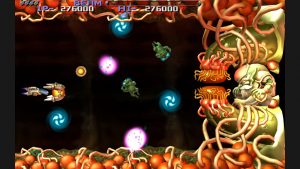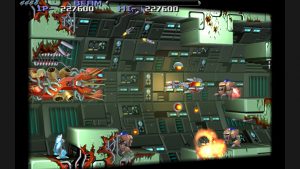The mid ‘80s was a renaissance for shooters. In 1985, Konami released Gradius. Not long later, in 1987, Irem released R-Type. These are two of the most important games in the genre. It’s completely stunning that, in its relative infancy, Irem could shape a game as ingenious as R-Type. One of the premiere side-scrolling shooters, R-Type moved a bit slower than your typical twitch games, with a meticulous pace and almost leisurely scrolling. The idea wasn’t to simply blast everything on the screen, although you could certainly try. The idea was, quite simply, to stay alive. Naturally, given the claustrophobic nature of the levels, swarming with enemies from every angle, this was never an easy task.
One of R-Type‘s claim to fame is the Force pod. An invincible little orb that’s your best friend in the universe, the Force can be attached to the front of your ship to not only provide a small shield, but also add extra firepower. It can also be attached to the ship’s aft to defend yourself from the rear as well as shoot behind. But that’s not it – the Force can be detached to roam around the playing field. Although its weaponry is pretty slim, it can fire vertically, making it invaluable in clearing out ceilings and floors. And while you have limited control over the Force – you can only detach and recall it to your ship – with some masterful positioning, you can use it to destroy bad guys in hard to reach places. Expert use of the Force is what really sets R-Type apart from everything else. You’re also equipped with little orbs called Bits, which float at the top and bottom of your ship. They mostly stay motionless, and like the Force orb, are invincible, so they can be used to absorb enemy fire or kill small enemies. Power-ups are obtained by shooting POW Armor vessels, which both float around and hop over the scenery.
The R-Type series is also quite notorious for its difficulty. Since enemies always come out in the same patterns, and you’re sent back to a checkpoint whenever you die, most of the games boil down to remembering when the bad guys attack, and how to solve the puzzle of destroying them while staying alive. Like many older games, this one’s only for the truly patient.
The visual designs are astonishing, too. The enemies are the evil Bydo empire, a combination of biological lifeforms fused with robotic equipment. Not only does this show through in the amazing enemy design, but the levels themselves usually share a distinct melding of creepy flesh united with cold steel.
While the storyline in the original amounted to nothing more than the famous quote on the title screen – “Blast off and strike the evil Bydo Empire!” – later games expound on the plot quite a bit. The Bydo are biological weapons that were initially a creation of humankind in the 26th century, but were actually lost in a wormhole. Not happy with being lost in the space-time continuum, they eventually evolved, traveled through time, and attacked humanity in the 22nd century. You pilot the R-9 fighter ship (and variations of it in later games) to fight the recurring menace. The Force pod actually contains Bydo matter, which is why it can absorb almost anything. Some of the lore is interesting, even if it’s rarely mentioned in-game. As for the title, according to a Japanese interview, the “R” stands for “ray” as in “ray of light”. It also stands for “round” as in the shape of the R-9’s canopy.
R-Type is clearly one of the most important series in old school gaming, even if plenty of people are put off by the difficulty, but even they have to admire the aesthetic qualities that permeates from every oozing alien pore.
The original R-Type still has some of the most fantastic level designs seen in any shooting game. The first stage begins with a quick flight through space – not too dissimilar from Gradius, which was released about two years before it – but soon enters into the mouth of the battleship. Enemies pour from both the top and bottom of the screen. A circle of orbs rotates around, firing shots – each can be destroyed one by one, but only the master orb in the center will destroy them all. At the end of the level is the monstrous Dobkeratops, an absolutely horrific H. R. Giger influenced beast with bright red skin, a huge tail that snaps back and forth, and a green face in its chest that acts as its weak point. It’s one of the most memorable bosses in all of video gaming, right at the end of the first level.
The rest of the game continues to impress. The second stage takes place in some kind of biological lab, with creepy algae and coral lining the floors and ceilings, and insects charging out from beneath. The boss here is the Gomander, a mound of flesh with several orifices that a flying snake weaves in and out of. The third stage is a single fight against a huge battleship, as the screen scrolls around, guiding you beneath it, around its cannons on front, and up to the top where its weak point lies. This is one of the most iconic stages in shoot-em-up history, and similar levels can be seen in dozens of later games. The fourth stage features strange bugs that leave web trails all around the screen.
The designs aren’t quite as cool in the latter half of the game, but the final boss consists of a strange little blue orb, which appears to have the facial features of a bearded old man, hiding in the womb of a fiercely alien creature.
The original arcade R-Type runs at a higher resolution (384×256) than all of the other game consoles. There are eight total levels, making it the longest outside of R-Type Final for the PS2. Even with all of the improvements made to its sequels, the arcade original still stands up.
Even though Nintendo distributed R-Type to American arcades, it never hit the NES. Instead, the 8-bit home port went to the Sega Master System, probably because it was more powerful in the graphics department. It was developed by Compile, who was known for various MSX and SMS shooters such as Aleste / Power Strike. While the port was obviously scaled down, it looks astounding for the time period, and other than the expected flickering and slowdown, made an excellent transition to the home screen.
It also has a secret exclusive level. In the fourth stage, in the part where the screen is filled with those green dots, there’s an opening in the ceiling at the top. Fly in that opening and go backwards, and you’ll enter the secret level, complete with weird green frog robots and a freaky boss.
The TurboGrafx-16 port is almost identical to the arcade version, with only some minor loss in graphic detail, and a slightly scrolling playfield to compensate for the difference in resolutions. In Japan, it was initially released in two separate packages. The first, dubbed R-Type I, contains levels 1-4, and the second contains levels 5-8. There’s also an additional boss (since level six technically didn’t have one in the arcade version) and a minor cutscene at the end of level four that acts as its “ending”. Initially the game was too big to fit on one HuCard, although by the time it hit America a year later, they were able to squeeze the whole thing into one release.
In 1994 in Japan, Irem released the R-Type Complete CD for the Super CD-ROM, which includes the entire game on one CD. Additionally, there are plenty of fully narrated cutscenes, although none of them are that great, and some weird redbook audio remixes of the music.
There are three compilations of R-Type I and II. The PlayStation version – dubbed R-Types – includes nearly perfect translations of both R-Type I and II, with the addition of a transparent status bar so the screen doesn’t need to scroll vertically. The game also keeps track of what levels you’ve already beaten, allowing you to skip ahead. In addition to a CG intro (only notable for the destroyed ship you see, complete with creepy skeleton pilot), there’s also a feature called R’s Museum, which includes various designs aspects, including 3D models of all of the main ships, a full enemy database, and the timeline of the games. Oddly enough, this feature is missing from the European release.
While R-Type I and II were initially released separately on the original Game Boy, Bits Studio redid both of their graphics and tossed it onto one cartridge for the Game Boy Color, calling it R-Type DX. Both the original (uncolored) and revamped versions are included, and while the color version looks reasonably decent, there’s some distinct palette changes from the original. It also suffers from plenty of slowdown and flickering, although otherwise plays pretty admirably for being on the Game Boy. The only real problem is that the hit detection – especially on the bosses – is pretty sketchy, making certain battles longer than they originally were. The extra R-Type DX mode simply combines R-Type I and II into one long mega-game.
R-Type was also ported to various home computers, with varying quality. The MSX2 version suffers from the same jerky scrolling that pretty much every action game on the platform possesses. The Spectrum version is slowed down a bit, but it’s a fairly decent port and pushes the system to the max. The Amstrad version is just a port of the ZX Spectrum version with less colors.
The Commodore 64 and Amiga versions were developed by Factor 5 and features a soundtrack by musician Chris Hülsbeck, famous for the Turrican series. He converted and arranged all of the arcade tracks, as well as creating original music for the title screen. The Commodore conversion isn’t too great and was obviously rushed – the credits even note the game was done in six weeks! The Amiga and Atari ST versions are outstanding, just missing some background details.
Even better than these are other Japanese computer versions. Irem ported R-Type to the X68000, and other than the difference in resolution and some enemy behavior, is almost perfect. The PC88VA port, developed by Telenet, is also excellent, just using a small color palette. This version also adds in a brand new exclusive intro cinema.
The R-Type games were also re-released for the Xbox 360 and PlayStation 3, under the name R-Type Dimensions. Developed by Tozai, it’s a full 3D overhaul of the first two games, featuring a total of fourteen levels with high-res polygonal graphics that almost perfectly mimic the style of the original arcade sprites. In other words, it looks damn good. There are even additional touches, like new background graphics where the area was previously black, and light sourcing on the Force pod. You’re given the option to switch between the 2D and 3D graphics on the fly. Even when playing in 2D, you can play in widescreen, and the field is expanded properly to take into account a 16:9 playing field. There’s also a “crazy” angle for the 3D mode, which positions the camera similar to some of the segments in Einhänder, which gives the view a bit of depth without being too disorienting.
The only major additions are with the two-player co-op mode (both local and online), and the “Infinite” mode, which lets you resurrect right where you die. Though this might not be the “correct” way to play R-Type, it at least lets players see the whole game, or concentrate on scoring, in this legendarily brutal game. In either mode, you can also restart the game at any stage you’ve reached. The lack of difficulty selection and button config are slight annoyances, and some of the hit detection is ever so slightly off from the arcade games. Plus, enemies seem to take more damage, making certain boss battles a bit harder than they used to be. The Xbox 360 version only uses the original arcade soundtrack, while the PS3 version also has newly arranged music.
Dotemu also developed ports for mobile platforms. They’re pretty decent, with touch controls that let you drag your ship around the screen for more precise movement. Chris Hülsbeck was also brought back to compose a brand new title theme.
A Chinese company named Magicorp also created an R-Type ripoff for the Famicom called Magic Dragon. The level design is exactly the same, although some of the graphics have changed. Some of it is really bad – the second level looks like a salad, with lobsters jumping out of it. There’s a ton of flickering, and the whole thing looks remarkably ugly. Your ship doesn’t even look like a dragon! It plays mostly okay, if a bit glitchy. There are only four levels, after which you get the curt message “End of Game”.
Screenshot Comparisons


